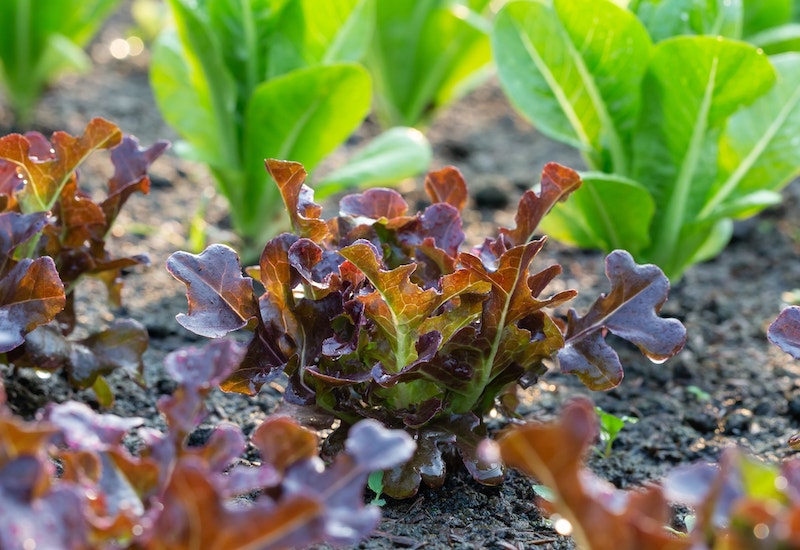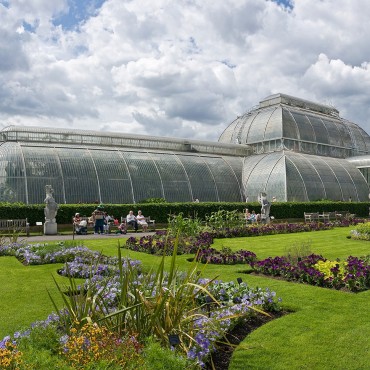Fast-growing vegetable seeds are a clever way to make your outside space more productive or fill an unexpected gap. Ideal for beginner gardeners looking for speedy results, they’re also a good way to build confidence. From salad leaves and radishes that are ready in several weeks to nutritious kale that will keep you going into winter, there are plenty of quick-growing crops to start from seed. Here are some expert tips from experienced allotmenteer Lee Senior.
Browse our full range of vegetable seeds for inspiration.
1: Lettuce leaves
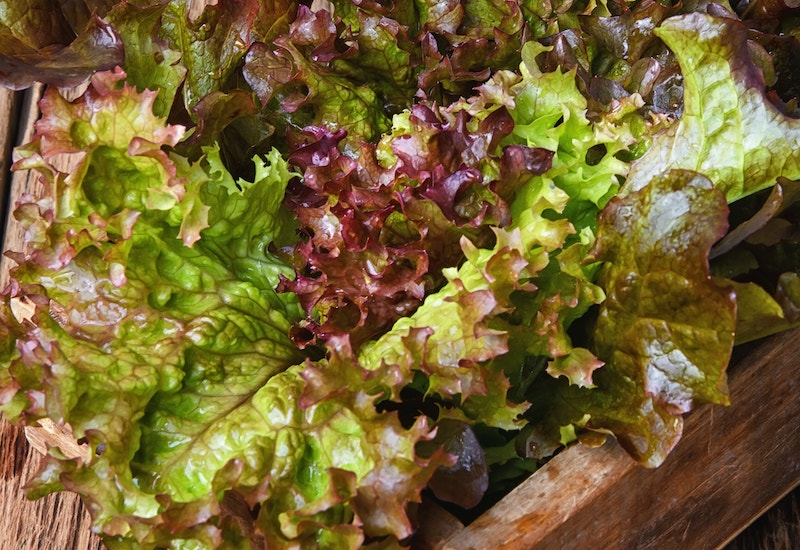
Image: Lettuce ‘Lolla Rossa’ Seeds from Suttons
Sowing tips: Lettuce leaves are easy to grow and germination takes 7-14 days if you can provide a temperature of 13C -18C. Simply sow the seed in trays or small pots of multi-purpose compost at a depth of 1cm. If you prefer to direct sow lettuce seeds in outdoor beds or containers, wait until early April and succession sow until late July. Pre-water the seed drill before sowing and lightly cover the seed with compost. Temperatures above 25C significantly reduce germination success.
Suggested variety: Lettuce ‘Salad Bowl’ is a quick-growing ‘cut and come again’ loose leaf type that doesn’t form a middle. Instead, it produces a regular supply of leaves over several months. The leaves are great for adding to mixed salads and have an attractive, frilly shape.
Best sowing period: The best period for sowing lettuce leaves (and lettuces) is between March and August, depending on the variety.
Sowing to harvest time: Salad leaves are ready to eat from 28-35 days after sowing.
2: Radishes
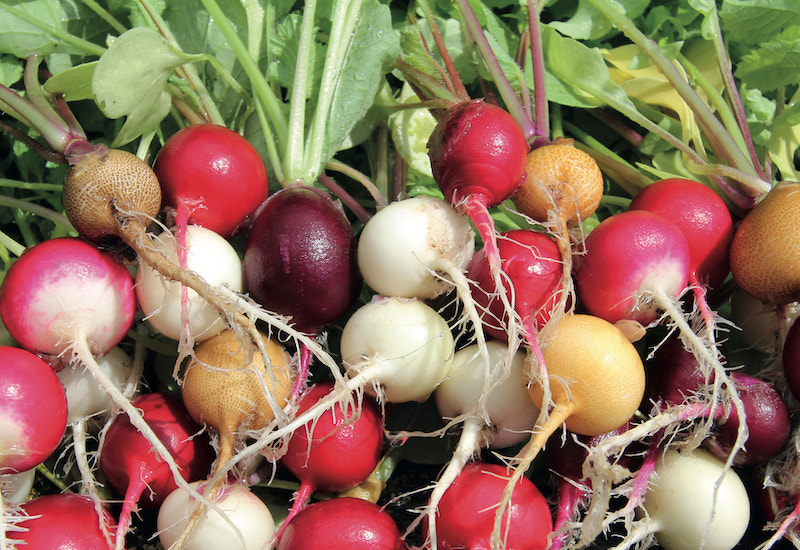
Image: Radish ‘Rainbow Mix’ Seeds from Suttons (© T&M)
Sowing tips: Radish is unquestionably the speediest veg around and germination takes place in as little as 3-6 days. You’ll just need a minimum temperature of 12C to kickstart germination. Sow the seeds in trays at a depth of 1cm and lightly cover with compost. Keep them in a cold greenhouse or on the windowsill. During the warmer months you can direct sow outdoors to avoid any root disturbance. Radishes are happy in containers and window boxes, as well as the veg patch.
Suggested variety: A packet of Radish ‘Rainbow Mix’ seeds is my favourite. It contains a number of different coloured radishes that are a surprise to pull and see what you get!
Best sowing period: Radish seeds can be started off in warmth as early as mid-February and then sown every 2-3 weeks until mid-September. The seed will also germinate successfully outdoors from early April as the soil warms up. Sow the seeds in standard drills at a depth of 1cm, and pre-water the drills if conditions are dry.
Sowing to harvest time: Radishes are ready in 28 days during the height of summer, and in about 35-40 days in spring.
3: Perpetual Spinach
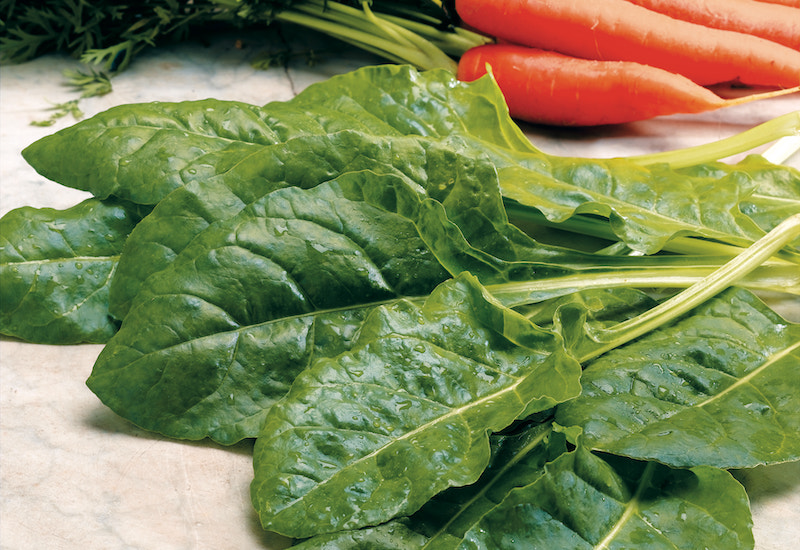
Image: Spinach ‘Perpetual Spinach’ Seeds from Suttons (© T&M)
Sowing tips: The nutritious leaves of ‘Perpetual Spinach’ are easier to grow than true spinach as they’re more tolerant of dry conditions. At temperatures of 16C-20C the seeds germinate in 10-14 days. Sow the seed at a depth of 1cm using seed compost or good quality multi-purpose compost.
Suggested variety: The ultra-reliable, Spinach ‘Perpetual Spinach’ (leaf beet) is the one to go for. It’s very tolerant of dry conditions.
Best sowing months: Sow in March and April under glass. Outdoor direct sowings can be made from the end of April to late June. Perpetual spinach is very hardy which makes it a useful crop. If you want to overwinter some plants, sow the seeds from mid-August to late September.
Sowing to harvest time: Don’t waste any thinnings or transplants – these leaves make a delicious early treat! For small baby leaf spinach leaves, start harvesting in as little as 42 days. If you prefer to leave them to grow on, the plants reach full size in 12-14 weeks. Perpetual spinach is great in salads and regular picking of the leaves stimulates new growth.
4: Kale

Image: Kale ‘Mix’ Seeds from Suttons
Sowing tips: Kale seeds germinate at lower temperatures than many veg, but between 10C-20C is best. Sow early spring crops under glass or on the windowsill at a depth of 1cm. Germination takes about 5-10 days depending on the warmth provided.
Suggested variety: My favourite option is a packet of Kale ‘Mix’ seeds that contains three different varieties: ‘Scarlet’, ‘Dwarf Green Curled’ and ‘Black Magic’. Between them, these varieties deliver an impressively long cropping season spanning over 6 months. This single packet of seeds is an incredibly cost-effective way to grow kale.
Best sowing months: March to June.
Sowing to harvest time: Smaller kale leaves are ready to eat from 12 weeks after sowing. Full-sized kale plants take 16-24 weeks to reach maturity.
5: Beetroot
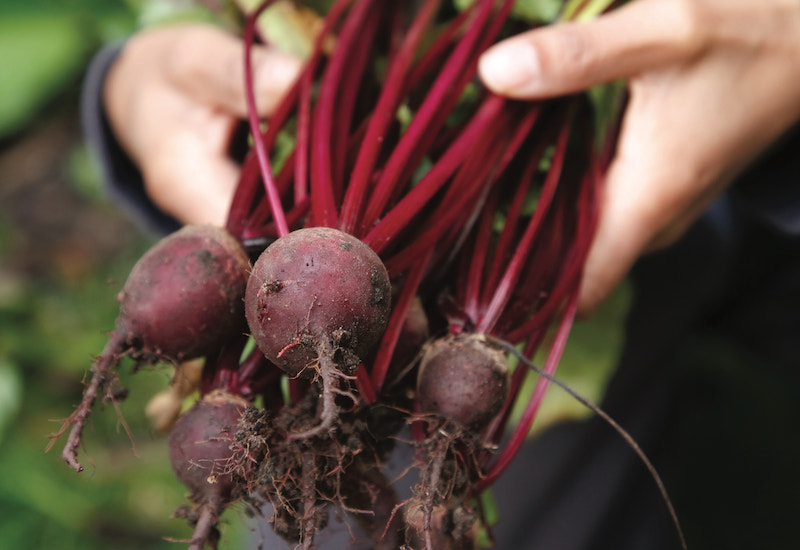
Image: Beetroot F1 ‘Pablo’ Seeds from Suttons
Sowing tips: Beetroot seeds are best sown directly where they are to grow as this vegetable dislikes root disturbance. Sow the seeds in pre-watered drills at a depth of 1.5cm and space them 10cm apart. Cover with multi-purpose compost and don’t let the soil dry out. Avoid soil that has been recently manured. Depending on soil and air temperature, the average germination time is 10-21 days.
Suggested variety: F1 Beetroot ‘Pablo’ is one of the easiest to grow and fastest-maturing beetroot around! This supercharged small beetroot grows quickly, stores well after harvesting and can also be frozen. It’s great for container growing and can be enjoyed fresh or pickled.
Best sowing months: Sow beetroot seeds from mid-April (when the soil has warmed up) to early August. The soil temperature needs to be at least 8C.
Sowing to harvest time: Beetroot ‘Pablo’ can be ready to harvest as baby beets in as little as 10 to 12 weeks, given good growing conditions.
6: Carrots
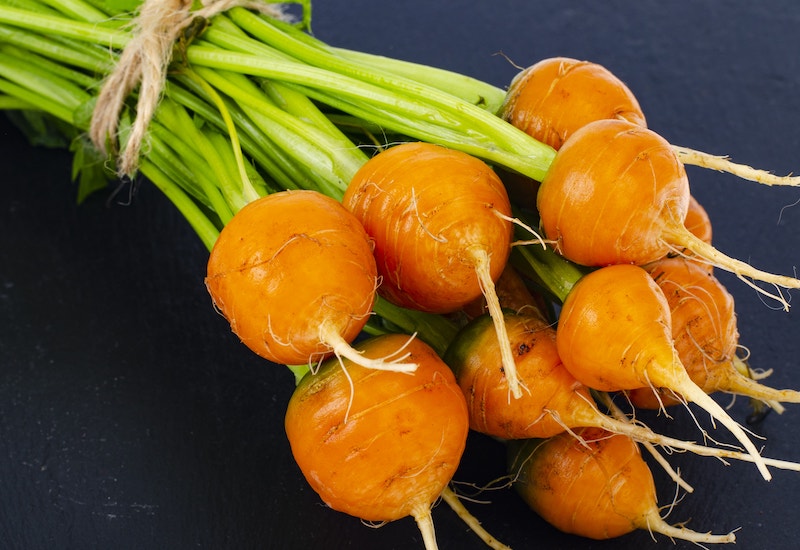
Image: Carrot ‘Rondo’ Seeds from Suttons
Sowing tips: Carrots are best sown directly where they are to grow to avoid root disturbance. Sow the seeds in pre-watered drills, 5cm apart at a depth of just over 1cm. Sieve the soil to a fine tilth first. Smaller varieties of carrots can also be sown in clumps of four seeds in raised beds or containers. If you prefer this method, leave 10cm between each clump.
Suggested variety: Carrot ‘Rondo’ produces round, bite-sized mini carrots and is my preferred choice. It’s quick, easy and fun to grow, and requires minimal effort. This variety grows in many locations including window boxes, shallow (and large) containers as well as directly in the ground.
Best sowing months: Sow carrot seeds from April to July. Wait until temperatures reach 12C and above, or germination can be quite slow and erratic.
Sowing to harvest time: Carrot ‘Rondo’ should be ready to harvest in 60-80 days.
7: Cherry Tomatoes

Image: Tomato ‘Tiny Temptations Mixed’ Seeds from Suttons
Sowing tips: Cherry tomato seeds are best sown in small pots or seed trays of seed compost. A heated propagator can be useful to provide the required germination temperature of 15C – 21C but a warm windowsill can usually provide sufficient heat. Sow the seeds at a depth of 1cm and cover with compost or vermiculite. It takes 7-14 days for the seeds to germinate.
Suggested variety: For a fun and fast-growing variety try F1 ‘Rainbow Drops Mix’. This cascading sweet and very flavoursome tomato grows successfully in hanging baskets, containers and even window boxes. The fruits range from yellow through to orange and of course glorious red!
Best sowing months: Sow cherry tomato seeds from late February through until early April.
Sowing to harvest time: 90-100 days.
8: Early Potatoes
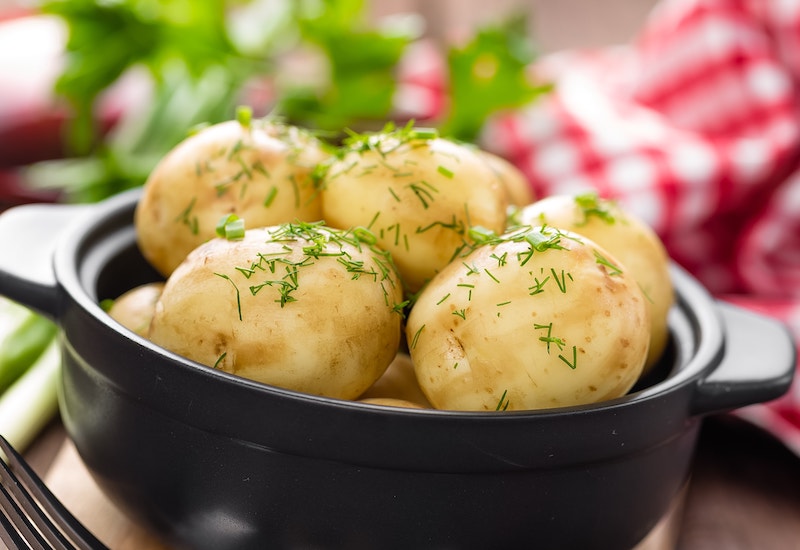
Image: Potato ‘Arran Pilot’ from Suttons
Sowing tips: Plant pre-chitted tubers of early potatoes in deep containers, barrels, potato bags or planters. Early potatoes can also be planted directly in raised beds or in previously prepared, fertile ground. In the ground, the tubers should be planted 30cm apart in a 15cm deep trench. Refill the soil to the original level.
Suggested variety: The early variety Potato ‘Rocket’ is fast-growing as the name suggests! It can be boiled, roasted and steamed for salads.
Best sowing months: Plant early seed potatoes in March and April, according to the soil and weather conditions.
Sowing to harvest time: 70 to 84 days.
We hope we’ve given you lots of ideas for quick-growing veg you can start from seed (or seed potato!) Find more of Lee’s practical vegetable growing advice over at his monthly allotment pages or follow him on Instagram: @lee_senior_gardening.
Last Updated on June 12, 2025 by Suttons Horticultural Team

